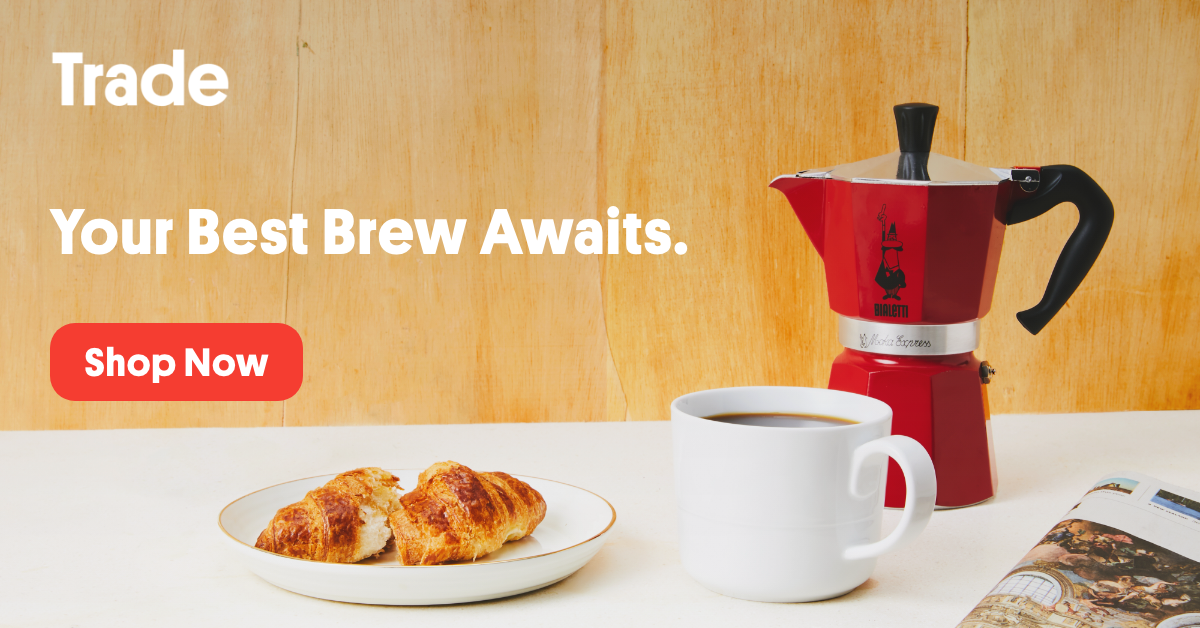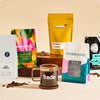Of the brewing questions I’ve received over the past few weeks in regards to how to make coffee at home, many have taken on some flavor of “How do I brew coffee at home if I don’t have the equipment you have?” Whether they're at home without a scale or gooseneck kettle, folks are finding themselves brewing more coffee and faced with recipes with precise measurements they may not be equipped to make. So, as much I still believe that getting a scale is going to improve your coffee brewing game a ton, that doesn't mean you can't make good coffee without one when necessary. Here are some tips:
Measuring Coffee
Figuring out how much water and how many tablespoons of coffee per cup you need for any brew recipe is one of the most important things you can do to brew a consistently perfect cup of coffee. Because different coffees have different shapes, sizes, and densities, it’s pretty hard to measure consistently by volume. We constantly advise grinding your fresh coffee bean blends, since measuring by volume is harder to do with whole coffee beans than with coffee grounds.
I did some tests the other day with my tablespoon measure, and it seems that for a medium roast coffee, I averaged out to around 5 grams of whole bean coffee per tablespoon (though with a range of more than half a gram either way). I tried to keep it as close to a flat tablespoon as possible, though that’s pretty hard with whole coffee beans. For super-light roasts, you’ll probably get a little more than 5 grams, for super-dark roasts, the difference is even larger, with an average of under 4 grams per tablespoon.
If your coffee’s already pre-ground, or you’re willing to grind a little extra, volume measurements are a little easier to get exact (though they can still vary from coffee to coffee, depending especially on roast). I found 4 grams per tablespoon pretty consistently within a few tenths of a gram for medium roasts, and between 3 and 3.3 grams for dark roasts. That’s with a leveled out tablespoon measure, not a heaping one. It initially didn’t make geometric sense to me how ground coffee could weight less, but I guess you’re really not going to come close to leveling out whole bean coffee in a tablespoon measure, so there’ll always be a bunch coffee bean matter above the ridge of it adding weight.
Use the following table to convert any coffee brewing recipe to tablespoons by dividing the gram amount by the number in the appropriate cell. (Definitely don't expect exact results)!
Grams per tablespoon of coffee:

Measuring Water
Measuring the water to start brewing isn’t super-hard, as long as you have some sort of measuring cup. Volume measures will never be as exact as using a coffee scale — and you dont have the freedom to pour whatever into your kettle before heating and just measure while pouring — but as long as you have some sort of glass or plastic measuring cup with volume lines on it, you’re golden.
If you don’t even have that, you can fill the cup(s) you’ll be drinking out of, and pour that into the kettle. A little of that water will stay in the grounds during brewing, so pour the water a smidge higher than you want the resulting perfect coffee level to be (this is a good tip for measuring water for an auto drip machine, too).
The big water obstacle is figuring out how to pour your hot water at the right pace. Sure, you could just fill your brewer up as far as it goes, let the water drip down, then fill it back up until you’re out of water, but in order to make coffee that’s close to as good as it would be with all the equipment, use a timer (you have one of those somewhere, likely your phone, I promise) and experiment.
Pour a little hot water to saturate all the grounds, wait 45 seconds, then pour some more water, let it drop a little and refill. Do that until you’re out of water. Then, notice how much time that all took. If it’s two minutes, try to brew slower next time by pouring smaller amounts of water. If it’s five minutes, get that water in quicker. You’ll eventually get into a groove.
If you have a carafe or other tempered glass situation you’re brewing into, the coffee level is another way to see just about how much water you have left. For those brewing over an opaque cup, that’s another disadvantage.
Using a Regular Kettle
There isn’t a ton of strategy I’ve found to making a pour over with a non-gooseneck kettle besides just being as careful as possible. We value those goosenecks, because they help us pour gently and get the exact amount of water we want every time, and because they can pour water gently without causing too much agitation. I don’t think that agitation will cause too much of a difference, but if you find your coffee coming out too bitter with the regular kettle, feel free to grind a little coarser to craft the perfect coffee taste.
Simple Pour over Recipe:
- Measure out 400 ml or 14 oz of water (those aren’t exactly equivalent, but we’re dealing with round numbers here)
- Pour into kettle and set to boil
- For medium roast coffee, measure 5 — as flat as possible — tbsp of coffee beans and grind on a medium setting. If coffee is ground, use 6 flat tbsp plus 1 tsp
- Place in pour over over a mug (make sure it’s large enough) or other vessel)
- When water boils take it off the heat. Wait 20 seconds
- Start timer and pour enough water to saturate all the grounds
- With 45 seconds on the timer, gently pour more water, filling your brewer around 3/4 of the way
- Refill whenever the water level drops significantly (don’t let the grinds peak out)
- If at around 2:00 minutes you still feel like there’s a lot of water in the kettle, start pouring more aggressively
- When you get the water all in there (ideally between 2:30 and 3:00 minutes), let it drip through
- Enjoy!
Curious about other coffee brewing tips or recipes? From espresso coffee to lungo coffee, Trade has got you covered.










